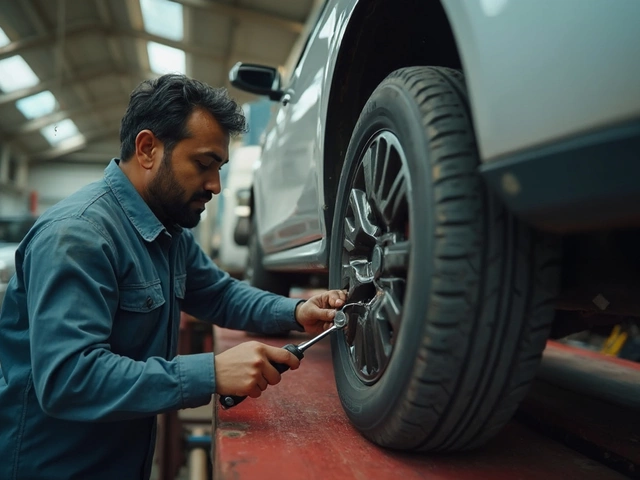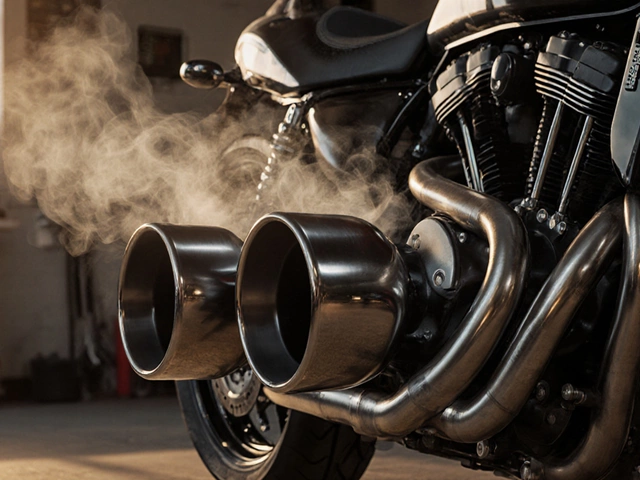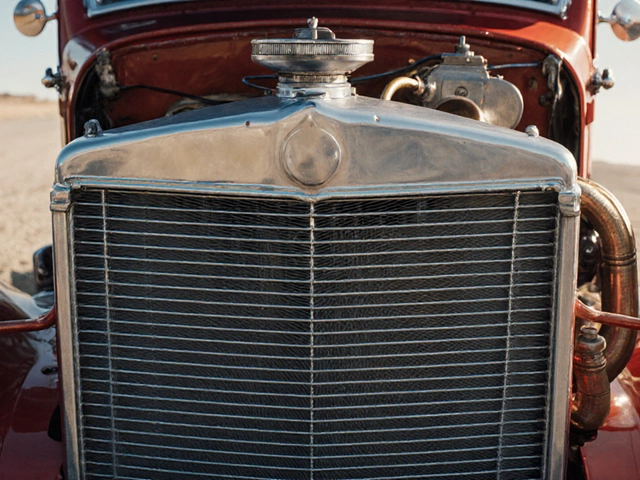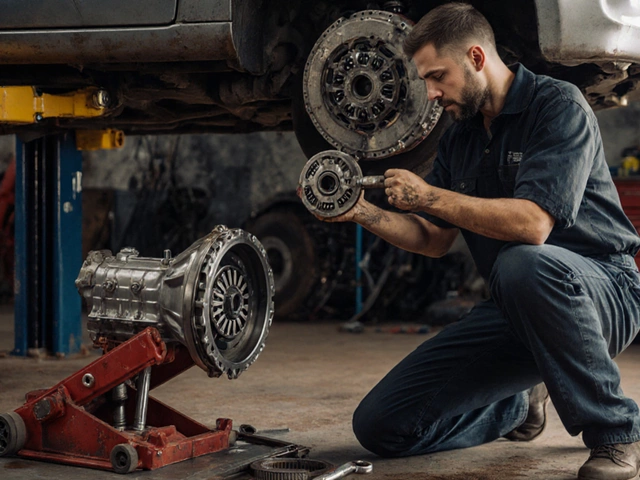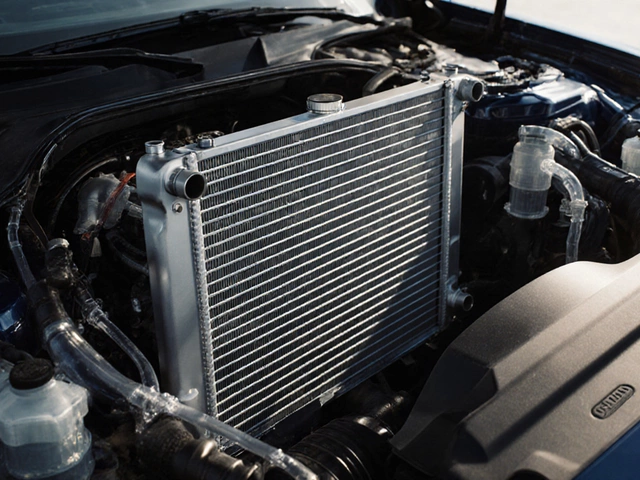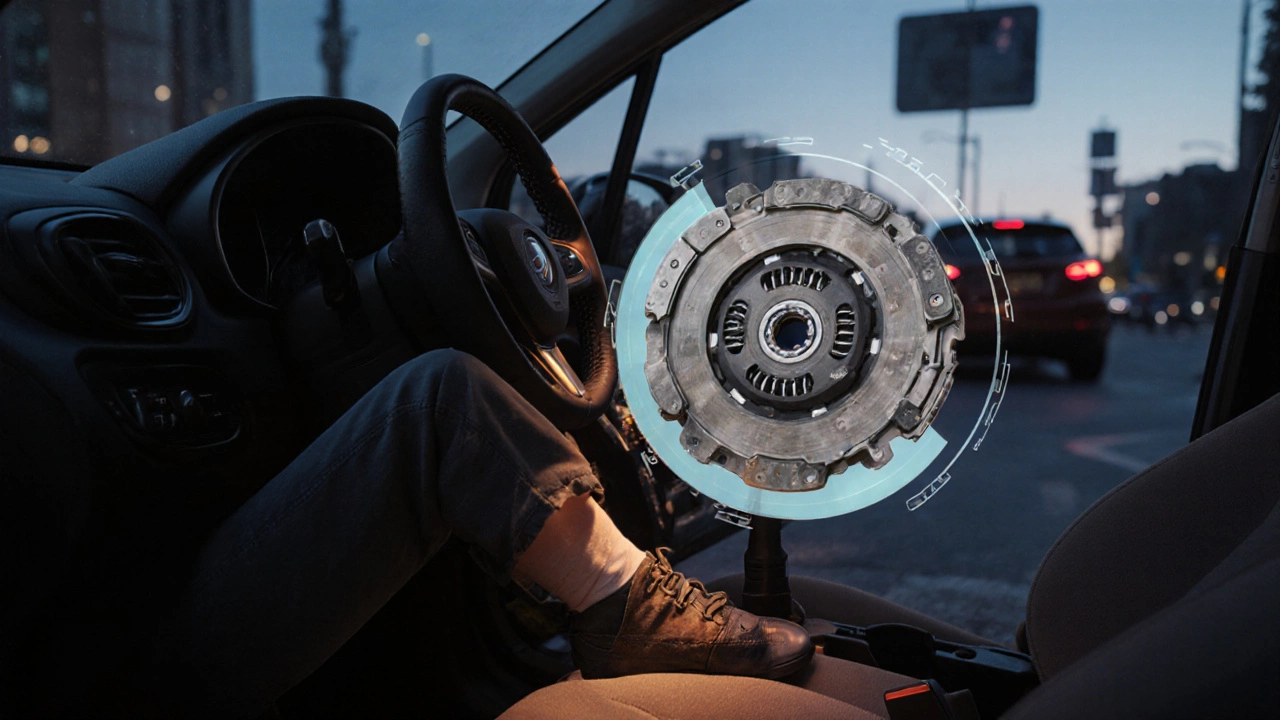
Clutch Kit Replacement Checker
Enter symptoms and inspection data, then click "Check if You Need a New Clutch Kit" to get your recommendation.
When your car starts feeling like it’s dragging its feet, the problem often hides in the clutch.
Clutch kit is a collection of components that transfer engine power to the transmission while allowing you to disengage the drivetrain when you shift gears.If you’re wondering whether you need a clutch kit, look for these tell‑tale signs.
Key Takeaways
- Grinding, slipping, or a spongy pedal usually means the clutch is wearing out.
- Simple checks - pedal free play, rev‑matching, and visual inspection - can tell you if a full kit replacement is required.
- A standard clutch kit includes a disc, pressure plate, release bearing and often a pilot bearing.
- Cost varies by vehicle but expect £300‑£800 for parts plus labour if you hire a garage.
- DIY replacement saves money but demands proper tools, a safe lift, and a willingness to spend a few hours.
Common Symptoms That Signal a Failing Clutch
Not every odd feeling means the clutch needs a new kit, but the following symptoms are strong indicators:
- Slipping under load. Engine revs rise but the car doesn’t accelerate proportionally, especially when climbing hills or pulling a trailer.
- Hard or noisy gear changes. A grinding or growling sound when shifting often points to a worn release bearing or pressure plate.
- Spongy or loose pedal. Excessive free play (more than 15mm) suggests a failing release bearing or hydraulic issue.
- Sticky or stuck pedal. If the pedal sticks at the floor or in the release position, the clutch may be seized.
- Burning smell. A sweet, acrid odor after heavy acceleration indicates the clutch disc is overheating.
How to Inspect Your Clutch Yourself
Before you book a garage, run these quick checks. They’ll help you decide whether a simple adjustment will do or a full clutch kit swap is unavoidable.
- Check pedal free play. With the engine off, press the clutch pedal to the floor and measure the distance it travels before the first resistance. Less than 5mm or more than 15mm is abnormal.
- Perform a rev‑match test. Start on a hill in first gear, give the throttle, and listen for a sudden drop in engine speed as the clutch engages. A dramatic drop suggests slipping.
- Listen for noises. While the engine runs at idle, gently press the clutch pedal. A squeal or grinding indicates a worn release bearing or pressure plate.
- Inspect the hydraulic system. If your car uses a hydraulic clutch, check the fluid level and look for leaks around the master and slave cylinders.
- Examine the flywheel. After removing the transmission (if you’re comfortable doing so), look for hot spots, cracks, or excessive wear on the flywheel. A damaged flywheel often means you’ll need a resurfacing or replacement along with the kit.
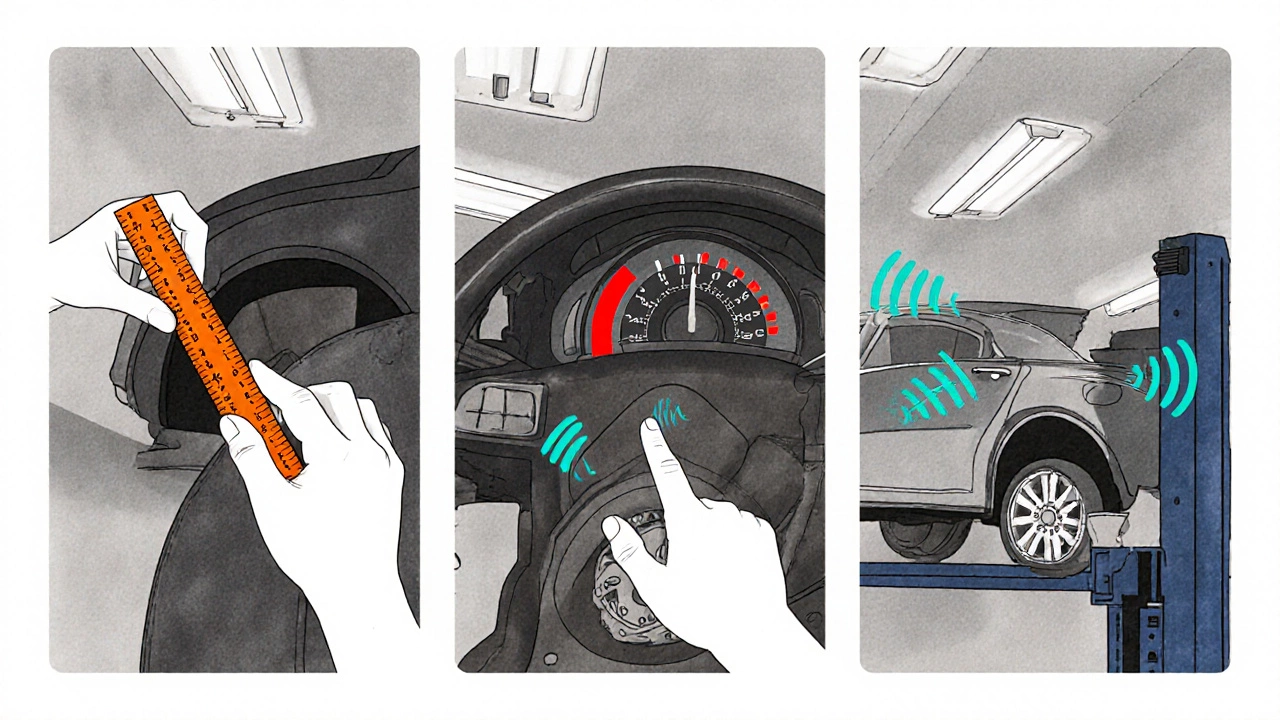
When to Opt for a Full Clutch Kit Replacement
Even if one symptom is mild, the wear on internal components often progresses together. Here’s a quick decision matrix:
- If you notice two or more of the symptoms above, plan for a full kit swap.
- If the clutch pedal feels firm but you hear grinding, replace the release bearing and pressure plate - usually sold as part of a kit.
- If the flywheel shows hot spots or cracks, a kit plus flywheel resurfacing is the safest route.
- For high‑performance or daily‑haul vehicles, replacing the kit at around 60‑80000miles helps maintain drivability.
What’s Inside a Typical Clutch Kit?
A standard kit packs the parts that wear together. Knowing each piece helps you understand why they’re sold as a set.
- Clutch disc - the friction element that engages the flywheel. It wears out first.
- Pressure plate - clamps the disc to the flywheel when you release the pedal.
- Release bearing - allows the pressure plate to disengage smoothly.
- Pilot bearing (or bushing) - supports the end of the transmission input shaft on the flywheel.
- Clutch friction material - varies by manufacturer; organic for street comfort, ceramic for high‑performance heat resistance.
DIY Replacement vs Professional Fit
Both routes have pros and cons. Choose based on your tools, time, and confidence.
| Aspect | DIY | Professional |
|---|---|---|
| Cost | ≈£150‑£250 for parts + tool depreciation | £300‑£800 parts + £200‑£500 labour |
| Time | 4‑6hours for most front‑wheel‑drive cars | 2‑3hours (incl. prep) |
| Risk | Higher if you lack a proper lift or torque wrench | Warranty‑backed work, correct torque settings |
| Learning value | Great - you’ll understand how the drivetrain works | Minimal - you’re paying for expertise |
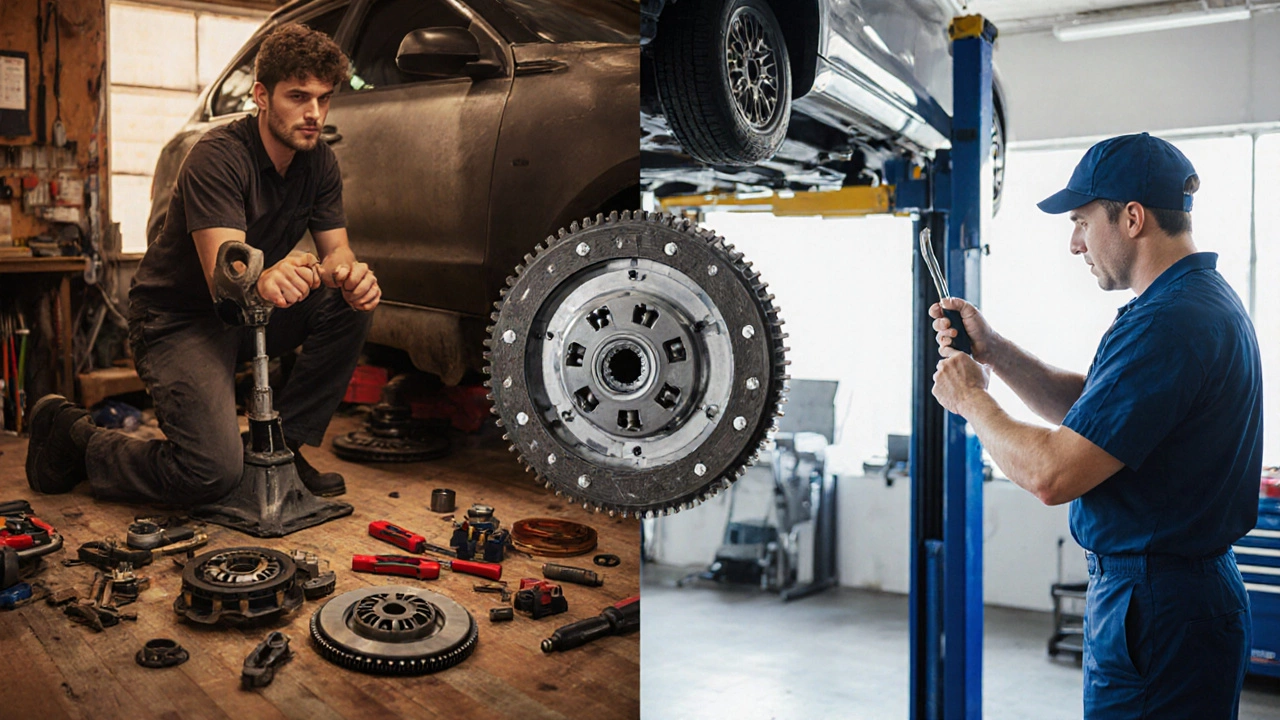
Cost Overview and Budgeting
Prices fluctuate by make, model and whether you opt for a premium ceramic disc. Here’s a typical UK price range in 2025.
| Vehicle Type | Standard Kit | Ceramic/Performance Kit |
|---|---|---|
| Compact hatchback | £180‑£260 | £300‑£380 |
| Family sedan | £210‑£290 | £340‑£420 |
| Sport coupe | £250‑£330 | £400‑£550 |
| Heavy‑duty SUV | £300‑£380 | £460‑£620 |
Don’t forget additional items like a new flywheel (≈£80‑£150) or a clutch slave cylinder (£70‑£120) if they’re worn.
Next Steps
After you’ve run the inspection, take one of these actions:
- If only the release bearing is noisy, replace it with a single‑part kit - cheaper and quicker.
- If the disc is glazed or thinner than 2mm, swap the full kit.
- If you’re uncertain, get a professional diagnosis; most garages will confirm the wear level for free.
- Plan your budget - factor in parts, possible flywheel resurfacing, and labour if you go to a shop.
Frequently Asked Questions
How long does a clutch kit usually last?
Most OEM kits last between 60000 and 100000miles, but driving style, city traffic and heavy loads can shorten that to 40000‑60000miles.
Can I replace just the clutch disc and keep the old pressure plate?
It’s possible, but manufacturers design the disc and pressure plate to work as a matched set. Mixing new and old parts can lead to uneven wear and premature failure.
What’s the difference between an organic and a ceramic clutch?
Organic discs offer smoother engagement and are quieter, ideal for daily drivers. Ceramic discs handle higher temperatures and deliver stronger grip, suited for performance or towing, but they can be harsher on the flywheel.
Do I need to bleed the clutch hydraulic system after fitting a new kit?
Yes. When you replace the clutch slave cylinder or any part of the hydraulic line, you must bleed the system to remove air bubbles and ensure proper pedal feel.
Is it worth resurfacing the flywheel with every clutch change?
If the flywheel is within the manufacturer’s wear limits (usually a maximum run‑out of 0.2mm), resurfacing isn’t mandatory. However, any hot spots, cracks, or excessive wear should be addressed to avoid clutch chatter.
